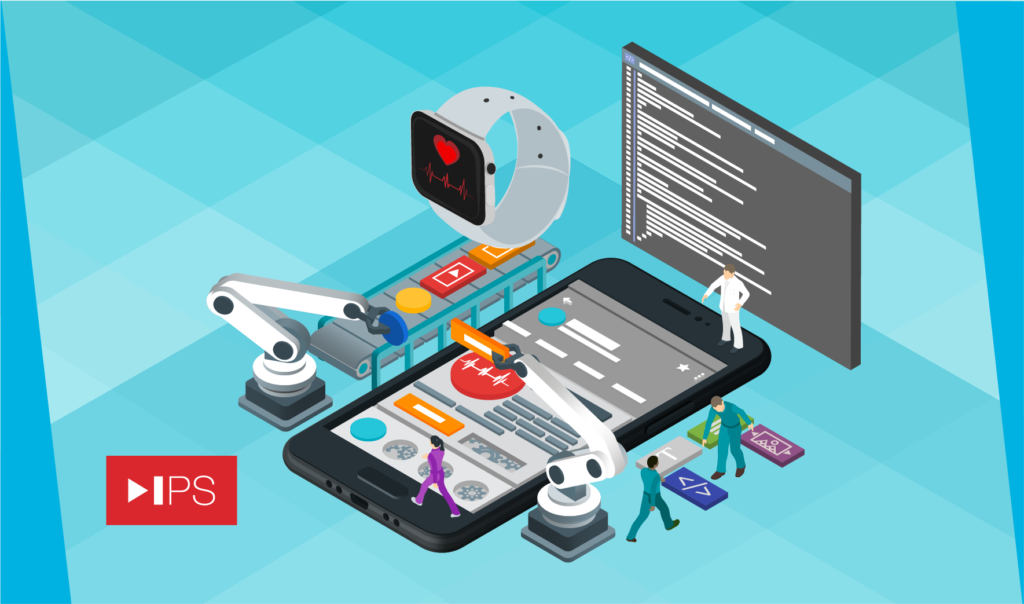
Unique characteristics in current Healthcare and Medical fields have altered the world of software for the industry. Today’s medical software teams must often be adept at developing complete, connected IoT (Internet of Things) ecosystems.
There’s increased pressure to bring products to market faster while maintaining the primal importance of security and patient privacy. Collaboration between all levels SW and HW teams is necessary and critical to success. The most streamlined method for developing rock solid IoT applications involves regular, well-cadenced interaction and collaboration between all skill areas of medical product development teams. This is the co-development approach.
App-level UX/UI developers now have to work hand in hand with embedded systems architects to provide an experience that is both seamless AND flawless for the end user or customer. This “co-development” is a new phenomenon in an industry which typically has segmented these activities. Cooperation between UX/UI and embedded systems architects requires that multiple teams make dynamic changes to software and hardware iteratively in order to arrive at the desired end product. Effective co-development processes that support cross-discipline collaboration require better integration among all of the tools used for hardware and software development, requirements, modeling, configuration management, and more. The processes rely on vigilant management of team collaboration.
IoT systems for the medical products category provide the opportunity to produce remarkably intricate software designs; however, managing separate software teams while integrating input and designs from UX/UI groups is a big challenge. A co-development approach makes it possible to minimize confusion, redundancy and bugs that could result from overlapping embedded, application and cloud efforts. Each separate piece of software must be written with clean, well-defined external interfaces that allow for easier integration with the other components. To some degree, this is good programming practice regardless of the type of software application you’re writing, but it’s absolutely essential to the team’s success in an IoT solution.
International The International Medical Device Regulators Forum (IMDRF) defines Software as a Medical Device (SaMD) as “software intended to be used for one or more medical purposes that perform these purposes without being part of a hardware medical device.” The newly redefined, co-developed IoT application encompassing medical devices, systems, users and the backend, can be referred to as Software as a Medical Tool (SaMT). IoT software project leads must prioritize work on the key components of SaMT, which are the application, the user interface, the embedded software, and the architecture of the system that allows it to push critical data through its components.
Teams comprised of both software AND hardware engineers and designers to work together to bring medical IoT products to market, and applications featuring SaMT’s are no different. Success is due to collaboration amongst teams with the knowledge to work across all levels of the SaMT stack in a coordinated effort. To design and develop a fully integrated, connected medical device, individuals or teams with the following areas of expertise are key:
- Industrial Design
- Software Application Engineers
- Mechanical Engineering
- Embedded Systems Architecture
- Electrical Engineering
- UX/UI Design
Our white paper on the reasons and how-to’s for streamlined co-development of software for the new world of connected medical devices and applications here.
About IPS: Intelligent Product Solutions, a subsidiary of Forward Industries Inc., iis a single source solution for the full spectrum of hardware and software product design and engineering services. The firm has extensive end to end experience in Internet of Things (IoT) technologies development and is currently involved in dozens of connected product designs. IPS specializes in the rapid “productization” of emerging technologies and advanced materials into high-value consumer and industrial products and applications. Its partners include market leaders that require sophisticated design solutions for their most promising and potentially profitable ideas. Clients include Google, Pepsico, Steinway and Sons, and Anheuser Busch.
